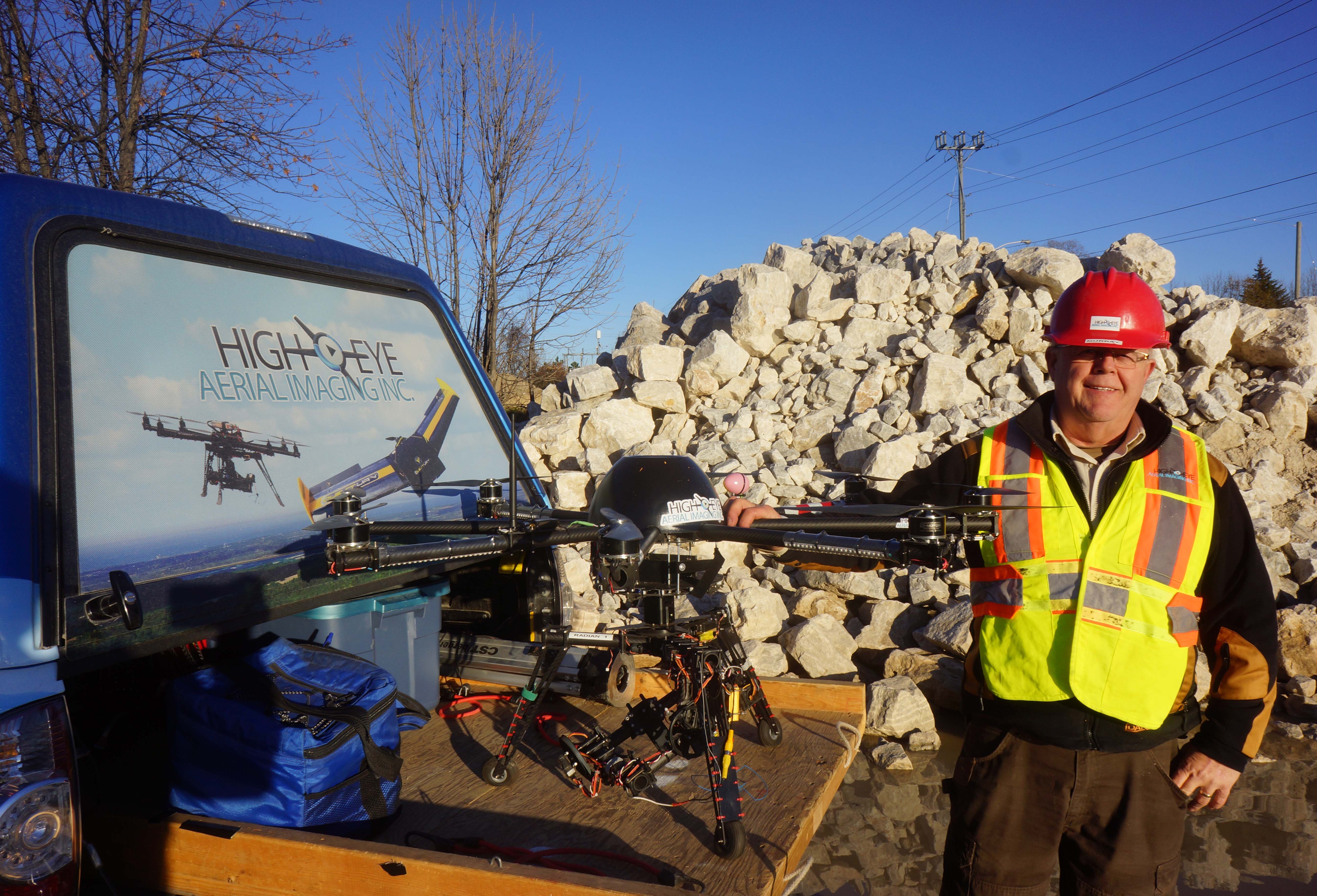
Products & Equipment
Pits & Quarries
UAV options: To buy or to rent?
Weighing the costs of UAV ownership for aggregate operations
June 9, 2017 By Murray Hunt

June 9, 2017 – When contemplating utilizing UAV/aerial applications in any operation, one of the first decisions required is whether to purchase a drone, or engage the services of a drone service provider.
The following are some points to consider, if purchasing:
Equipment
Depending on your application, you will want a fixed wing UAV for large, open area projects. Or if you operate in smaller, confined areas, a VTOL multi-rotor may be a better option.
Cost
The Internet and media are flooded with cool looking “hobby” drones that you can buy starting at about $1,000. If you are planning on using a drone for any surveying/mapping projects, you will need a UAV designed to carry larger specific payloads. You can expect to pay in excess of $30,000 for a survey grade UAV. In addition, the support equipment (imaging equipment, base station, computer, extra batteries, transportation equipment) can easily double the cost of the UAV.
Maintenance and repairs
Even for the experienced pilot, damage is inevitable. During the training phase it is not uncommon for an inexperienced pilot to have numerous crashes costing thousands of dollars in parts, not to mention lost time. As for maintenance, batteries have maximum charge cycles, and depending on use, will last about one year. The LiPo batteries used in UAVs can cost hundreds of dollars each. Due to the harsh environment most commercial UAVs operate in, much of the electronic equipment on board is prone to failures that can potentially cost several thousand dollars a year.
Regulations
In Canada, Transport Canada regulates the commercial use of all UAVs (regardless of size). All commercial use of UAVs in Canada requires both the crew (minimum two trained persons) and the UAV to be certified. The regulations are constantly changing, and proposed new rules will place even more onus on the commercial application of UAVs. As part of Transport Canada regulations, commercial UAV liability insurance is also required.
Training and personnel
Not only is it required by Transport Canada that UAV crews be properly trained, but, as with any equipment, competency training is necessary. Along with understanding and acquiring skills to operate the UAV and imaging equipment, proper and efficient workflow and operating procedures must be developed. In areas of low employee retention, the constant training of new employees could become a significant expense.
Data processing
All of the equipment, training and data acquisition are only half of the equation. Without the software, computers and data processing knowledge to process the data, flying UAVs is just a hobby. Alternatively, there are offshore processing services that will process the data. This means less capital outlay, but fewer options and loss of control.
Utilization
As with any acquired skill, without regular practice it is difficult to maintain peak proficiency. Unless the crew is operating once a week, not only will their skills suffer, but a significant capital asset and training investment is not being utilized.
If you chose to engage the services of a professional UAV service provider, the only thing you need to do is ensure they are certified and insured.
Murray Hunt is the president and chief UAV pilot for High Eye Aerial Imaging, a UAV service provider based in Ontario. This column first appeared in Ontario Miner.
Print this page